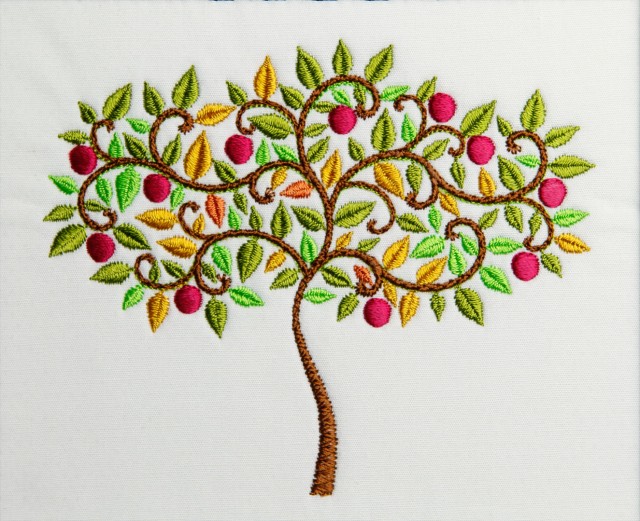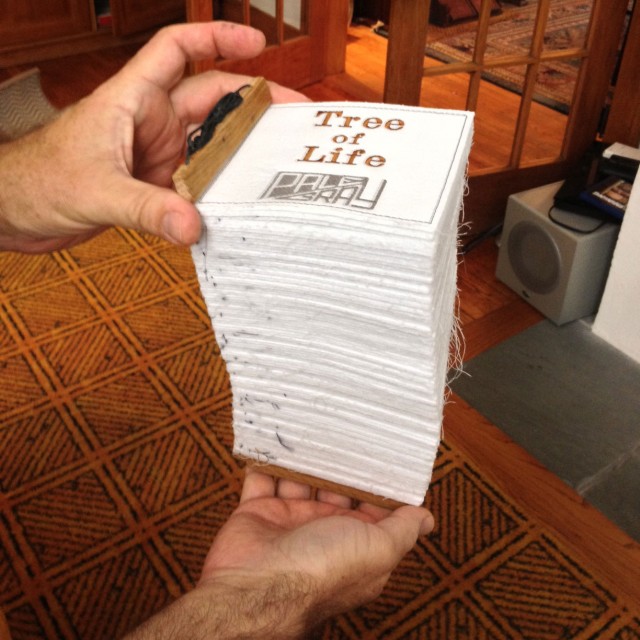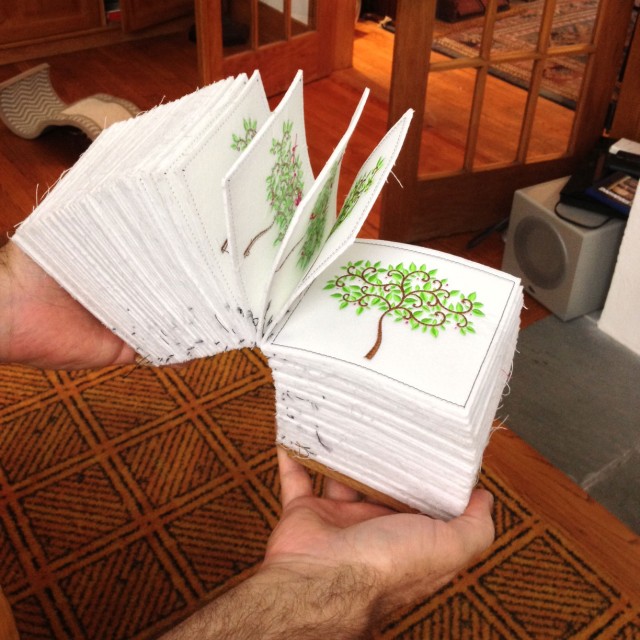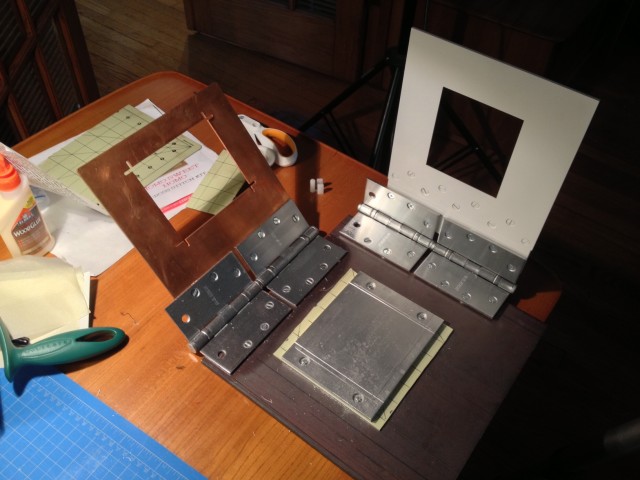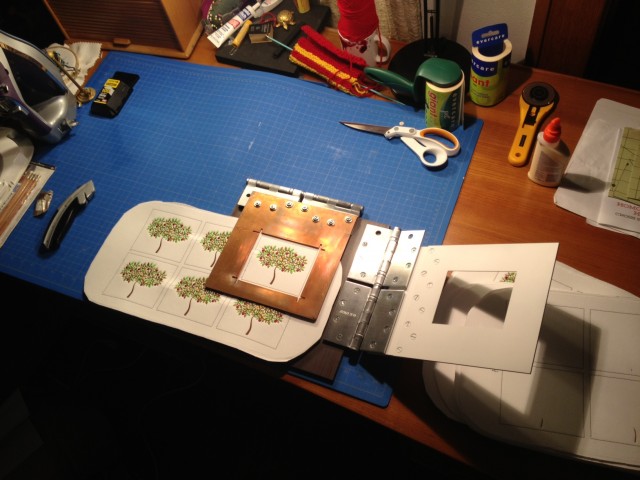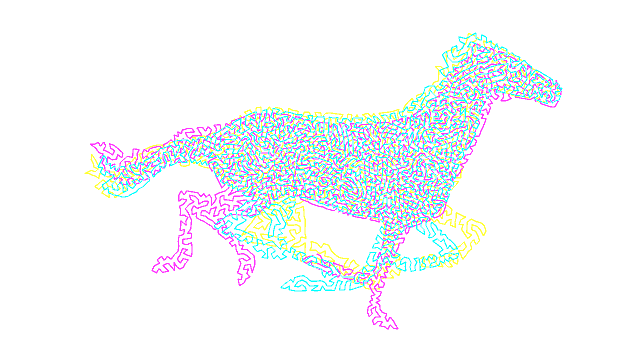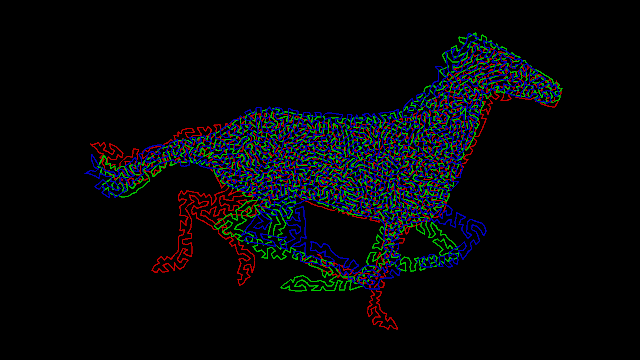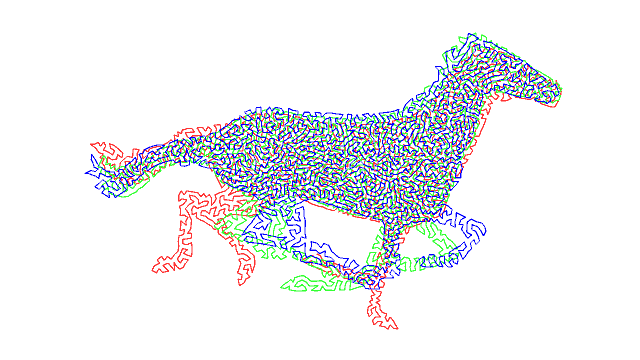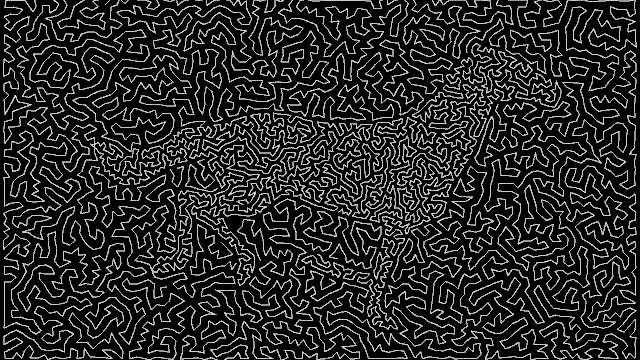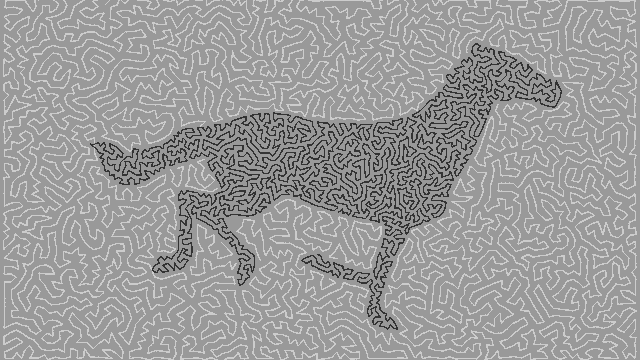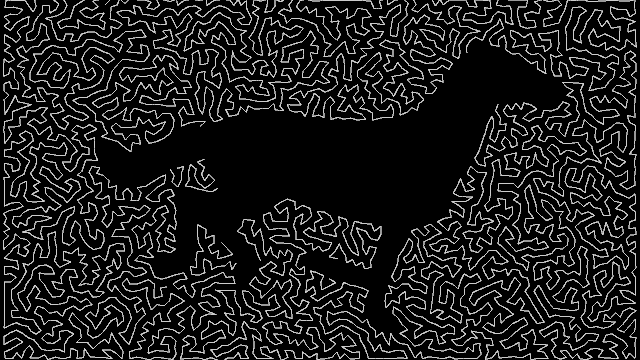The source animation (a vector file sequence) was adapted from my short segment for the upcoming feature film “The Prophet.” That will definitely not be rendered in Embroidermation, but the Tree of Life is such a classic, traditional embroidery motif it was just crying out to be used in this test.
In addition to stitchcoding, Theo hooped and ran the machine on all 96 frames, and then he made them into a flipbook.
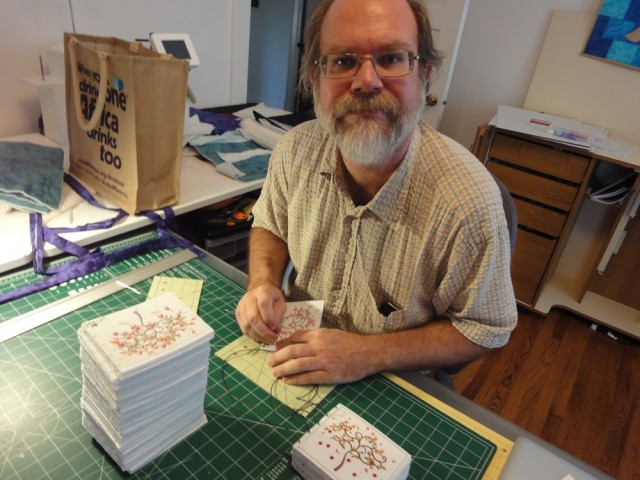
Because he’s crazy, that’s why. He even crafted a copper rig to cut out the frames precisely, and register them for photography (he photographed them too).

